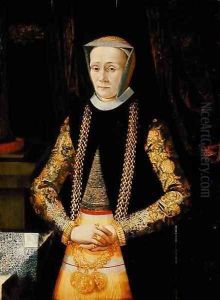Jacob Jacobsz Paintings
Jacob Jacobsz, born in 1618 and deceased in 1682, was a notable figure in the Dutch Golden Age of painting, a period renowned for its remarkable progress and achievements in the arts. Not as widely recognized as some of his contemporaries like Rembrandt or Vermeer, Jacobsz nonetheless contributed significantly to the artistic landscape of the 17th century in the Netherlands. His works, which often explored religious themes, landscapes, and portraits, exhibited the detailed realism and emotional depth characteristic of the period.
Jacob Jacobsz's journey as an artist was marked by his dedication to mastering the craft of painting, with a particular focus on the interplay of light and shadow, a hallmark of Dutch Golden Age artworks. His paintings not only captured the physical likeness of his subjects but also sought to convey their inner life and character, a testament to his skills in observation and his sensitivity as an artist.
Throughout his career, Jacobsz was active in the thriving art market of Amsterdam, where he interacted with other artists, patrons, and art collectors. This vibrant artistic community provided a fertile ground for his development and exposure. Despite the lack of extensive records on his life compared to more famous peers, Jacobsz's surviving works continue to be studied and appreciated for their contribution to the rich tapestry of Dutch art.
Jacob Jacobsz's legacy, while overshadowed by the luminaries of his time, remains an important part of the understanding of the Dutch Golden Age. His paintings, few of which are documented and attributed to him with certainty, offer insights into the era's artistic conventions and the diverse subjects that captivated the imagination of artists and their patrons alike. Through his art, Jacobsz has left a lasting impression on the history of Dutch painting, embodying the skilled craftsmanship and aesthetic sensibilities of his time.
